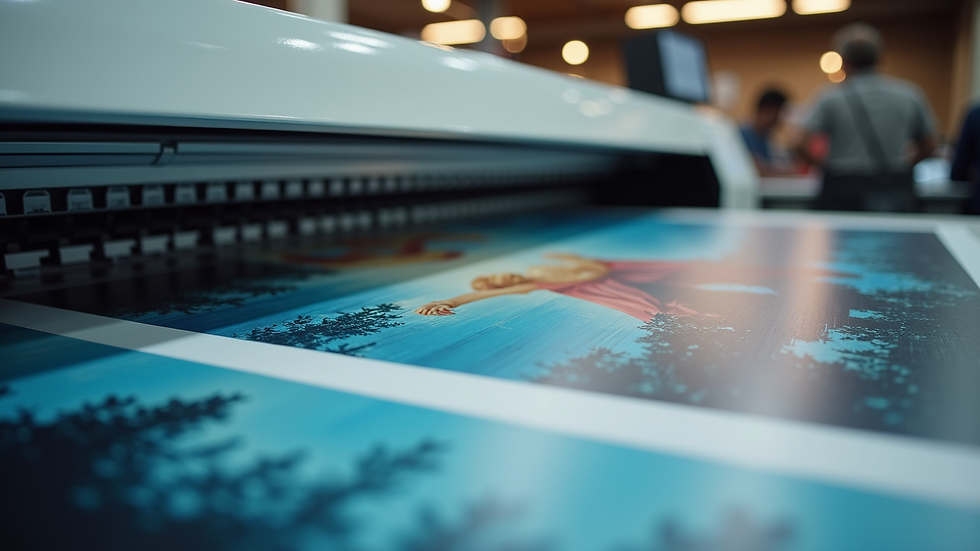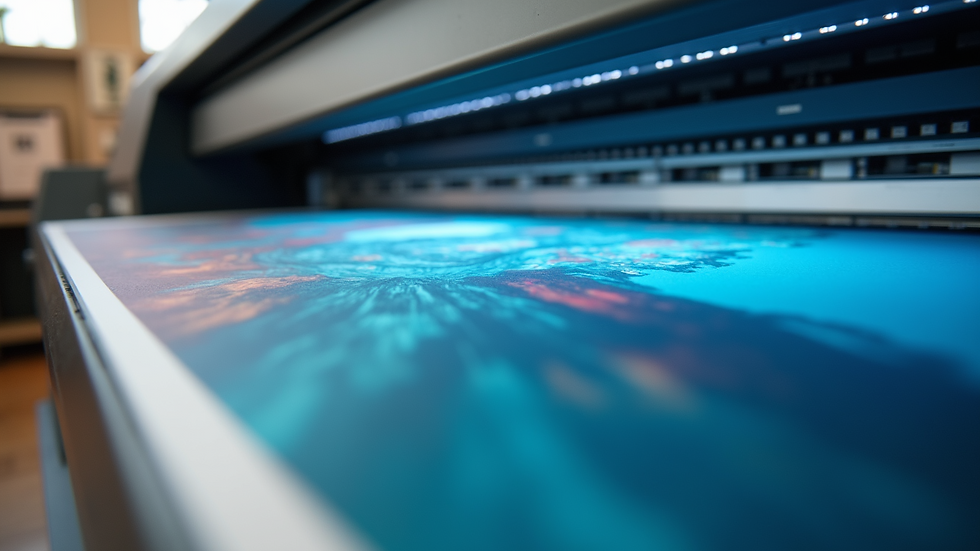The Indomitable Charm of Printing: Why Printing Will Never Die
- The Colour Crew
- Jun 14, 2023
- 3 min read
In today's digital age, where screens dominate our lives and virtual communication prevails, it's easy to assume that printing is on the verge of extinction. However, contrary to popular belief, printing continues to thrive and maintain its irreplaceable role in our lives. In this blog post, we will explore the enduring charm of printing and discuss why it will never fade away, despite the rise of digital alternatives.
Tangible and Personal Connection
One of the critical reasons printing will never die is the tangible and personal connection it offers. Printed materials, such as books, photographs, and artwork, provide a physical presence that engages our senses in a way that digital content cannot. The ability to hold a book, flip through its pages, and feel the texture of paper evokes a deeper emotional connection and enhances the overall reading experience. Similarly, printed photographs allow us to relish cherished memories, while printed artwork adds a touch of authenticity and uniqueness to our living spaces.
Accessibility and Convenience
While digital content may seem omnipresent, printing remains a more accessible and convenient medium for many people. Not everyone has constant access to electronic devices or the internet, and printed materials offer an inclusive way to disseminate information and share ideas. Books can be read without needing batteries or Wi-Fi, making them reliable companions in areas with limited technological infrastructure. Additionally, printing allows for easy sharing, archiving, and referencing, especially in contexts where digital storage may be unreliable or vulnerable to technical failures.
Visual Appeal and Aesthetics

Printing allows for the creation of visually captivating and aesthetically pleasing materials that cannot be fully replicated in the digital realm. From beautifully designed books with intricate typography to meticulously crafted art prints, printing embraces the artistry of layout, colours, and textures. The use of high-quality paper, inks, and finishes adds depth, richness, and a sense of craftsmanship to printed materials. These physical attributes create a visual allure that elevates the overall impact and impression of the content.
Credibility and Permanence
Printed materials often carry a sense of credibility and permanence that digital content can struggle to match. Books published by reputable publishers undergo rigorous editing, fact-checking, and quality control processes, enhancing their trustworthiness. Additionally, printed materials are not subject to the dynamic and ever-changing nature of the internet, where information can be altered or disappear at any moment. The permanence of print lends a sense of reliability and authenticity, making it an enduring source of knowledge and reference.
Nostalgia and Sentimental Value
Printed materials hold sentimental value and evoke nostalgia, reminding us of cherished moments and experiences. Whether it's flipping through a childhood photo album or rereading a favourite book, print can transport us back in time and evoke emotions that digital content often fails to replicate. The act of physically holding and interacting with printed materials creates a tactile and emotional connection that is deeply ingrained in our collective memories.
While the digital revolution has undeniably transformed the way we consume and share information, printing continues to hold a significant place in our hearts and lives. Its tangible nature, accessibility, visual appeal, credibility, and sentimental value ensure that printing will never fade away completely. As we embrace the convenience of digital technology, let us also celebrate the enduring charm of printing, recognizing its irreplaceable role in preserving knowledge, fostering creativity, and connecting us to our shared human experiences.




Comments